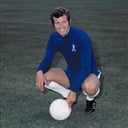How many blocks are used in a standard game of Jenga?
Jenga is the name of a game created by British author Leslie Scott (born in 1955), which she launched at the London Toy Fair in 1983. Played by 2 or more people, players take turns removing one block at a time from a tower constructed of 54 blocks. They place the block they removed on top of the tower, gradually creating a precariously unstable structure. The player who knocks the tower down first is the loser.
Each block is 7.5.cm (2.95 in) long, 2.5 cm (0.98 in) wide and 1.5 cm (0.59 in) thick. To set up the game, three blocks are placed adjacent to one another on a flat surface, upon which another three are placed at right angles. The tower is built up accordingly until all 54 pieces are used, totaling 18 levels.
The person who built the tower makes the first move by taking one block from any level except the top, using only one hand. After they have placed this piece on the top of the tower, it is the next person's turn. The game ends when the tower falls. The winner is the last person to successfully place a piece on the tower without it collapsing.
The name 'jenga' is derived from the Swahili word 'kujenga', which means 'to build'. Although a British national, Scott was born in Tanganyika in East Africa, where she was raised speaking both English and Swahili.
As of 2021, over 90 million Jenga games have been sold worldwide. This equates to more than 4.86 billion Jenga blocks.
More Info:
en.m.wikipedia.org

